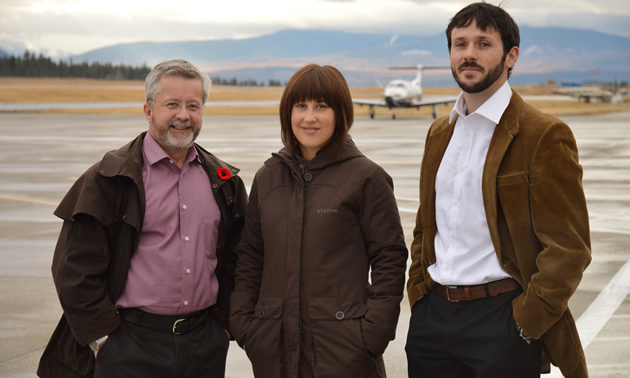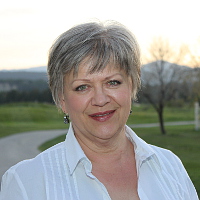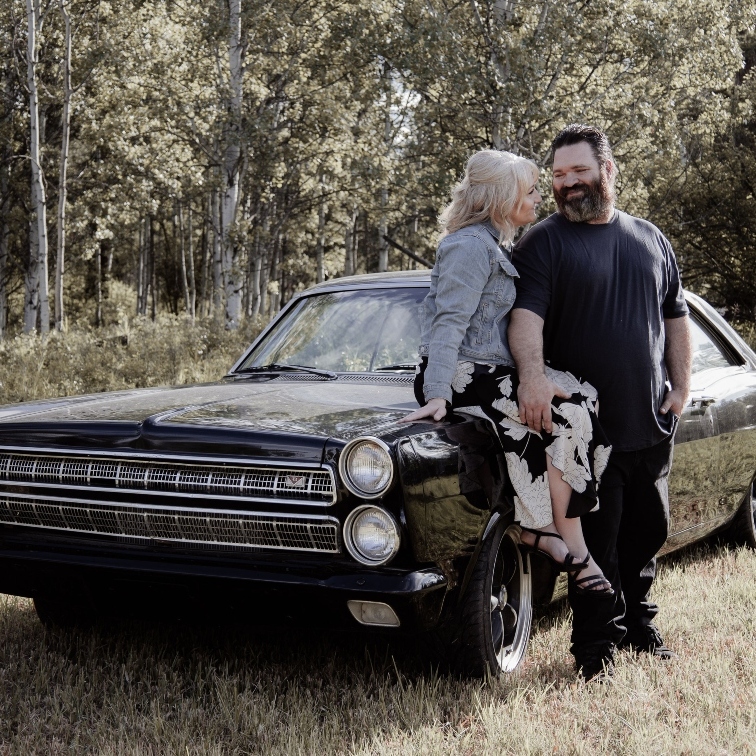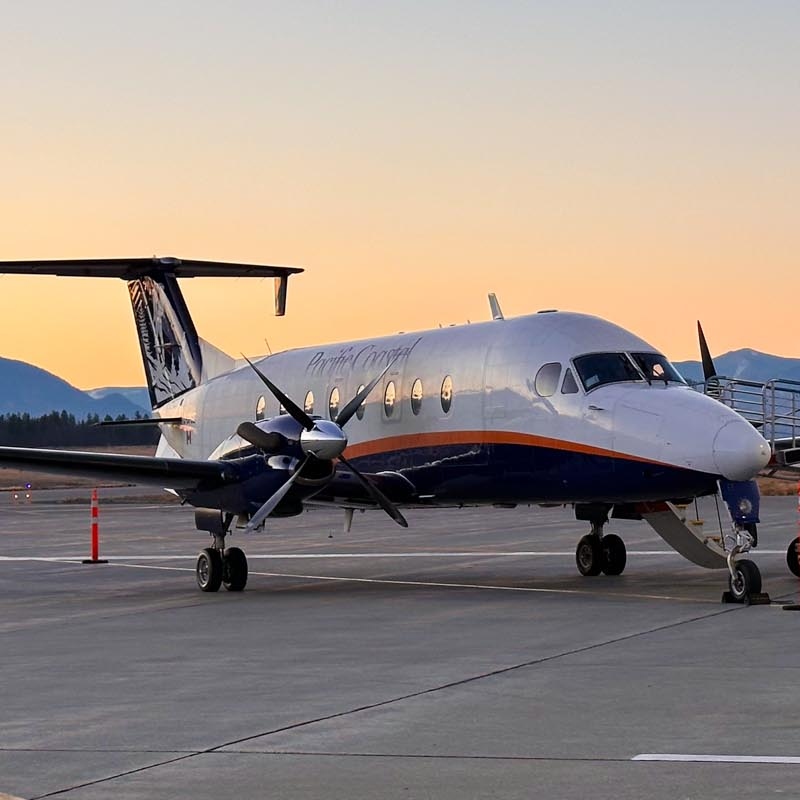Economic collaboration in the East Kootenay
Economic development officers for the St. Mary's Band and the cities of Cranbrook and Kimberley have a practical collaboration

(L to R) Kevin Weaver, Becky Pelkonen and Kevin Wilson met us on the tarmac at the Canadian Rockies International Airport. — Kirsten Armleder photo
Economic development (ED) may sound like a dry, facts-and-figures subject—one that is of interest mainly to corporate types. Here is a definition from Kevin Wilson, the economic development officer (EDO) for the City of Kimberley, that puts a much more dynamic face on the subject.
“For me,” Wilson said, “economic development is a means of improving overall community well-being and quality of life, ensuring healthy, vibrant communities, making sure that people have the resources to live high-quality lives. Successful local ED relies on community input and regional solutions to regional needs. It’s looking at what is happening in the local communities and getting people to agree on how we’re going to work on strategic goals.”
I recently had a conversation with the heads of the ED departments of three neighbouring East Kootenay communities: Kevin Wilson, EDO of the City of Kimberley; Kevin Weaver, EDO of the City of Cranbrook; and Becky Pelkonen, director of community and economic development for the St. Mary's Band. Through this conversation, a number of themes became evident.
1. While the East Kootenay needs to compete in the world marketplace to attract available dollars, the individual communities here need to collaborate, not compete, with each other.
Pelkonen: “Before, we were working more in isolation. Now, our three ED offices feel free to use each other as resources. If what they have done is similar to what we’re trying to achieve, and we can use the same data, there’s no point in creating redundancies.”
Wilson: “We have a higher profile as a region than we do as an individual community. We also have greater assets as a group than we do as individual communities. A higher profile translates into immigration, tourism, investment and all sorts of benefits.”
2. Insufficient revenue is a constant challenge for all three communities.
Kevin Weaver: “It’s a balancing act between current requirements and long-term aspirations in the communities. With economic development, we’re not just addressing immediate needs, we’re also trying to build for our kids and what they can expect for their future. It’s not easy, because there’s pressure requiring us to focus on different areas at different times—to take into account immediate and long-term issues.”
Pelkonen: “Unlike municipalities, First Nations don’t have a lot of tax revenue. So we need to create businesses in order to get those revenues in and create employment.”
Wilson: “I think one thing we all share is the reality of limited resources. The municipal governments are limited to property taxation revenue, and most of Canada’s cities have aging infrastructure and growing demands to renew that infrastructure. So there are competing demands for limited resources.”
3. These three EDOs recognize the efforts of those who have gone before, citing former Cranbrook mayor Scott Manjak and St. Mary's Band Chief Cheryl Casimer as doing important work.
Pelkonen: “We’ve come an incredibly long way in even engaging with our regional partners. Chief Cheryl Casimer and former mayor Scott Manjak did a lot of work in building and repairing the relationship between Cranbrook and the St. Mary's Band, and that is an anchor for the whole region. Kevin (Weaver) and I worked behind the scenes on that.”
Weaver: “The area where we’ve seen the greatest progress is the area of relationships, with a lot more interaction and collaboration among the three communities in the last several years. It can be milestones like signing the memorandum of understanding (MOU) between the City of Cranbrook and the St. Mary’s Band—we’re very proud of that achievement—but also it’s the relationships that have been forged. It’s in the everyday things like sharing information about education opportunities or meetings—we’re seeing each other as colleagues we can call upon. I know Cranbrook’s mayor, Wayne Stetski, has a real interest in seeing that positive relationship continue and grow.”
Projects in progress
Collaboration makes good financial sense, because saving time translates into saving dollars. The EDOs talked about ongoing and future projects that they have in common.
Weaver: “We’ve been working collectively on the Wildland Urban Interface (WUI) bioenergy initiative. This is not just Cranbrook, Kimberley and the St. Mary’s Band, but the Ktunaxa Nation Council, Nupqu Development Corporation, Rocky Mountain Trench Society, the Town of Creston and the Lower Kootenay Band. It’s a long-term initiative, and simply getting this partnership established to work together was a huge accomplishment. We collaborated in resolving the issue of forest growth that potentially threatens our communities from wildfire, and are joined in an economic approach to see if we can find a solution by creating a regional bioenergy sector.
“Cranbrook was chosen by the province to take a lead on the Asia Pacific initiative for the region, so recently we had a delegation from the city of Wonju, South Korea, visit Cranbrook. The approach we took was that, because Wonju is a city with a vibrant economy and a population of more than 380,000 people, we need to engage with them as a region, collectively.
“Similarly, the St. Mary's Band and the City of Cranbrook have the opportunity to expand our industrial options on land adjacent to the airport. We’ve been working to try to find out how we can develop the land either jointly or in a complementary manner, and also collaborate on marketing.”
Wilson: “The Rails to Trails path is a very nice amenity that connects the communities. To attract folks from outside, this amenity is one we can point to as an asset for our region and symbolic of our area. It gives a higher profile for the region rather than just one community.”
Projects for the future
Wilson: “Kimberley is in negotiations for a joint-venture project with Teck Resources to install a two-megawatt solar-power facility on former mine lands. I learned that the St. Mary's Band is looking at evaluating their solar potential, so I shared information and resources with Becky and with Brian Watson, the St. Mary's director of lands and resources, about the techniques to evaluate solar potential. It would be great if our experience could benefit them.
“If we create a bioenergy or solar facility in one community, the idea is that it will be an anchor for activities throughout the region. People may be doing training, teaching or applied research that could spill over into different parts of the region, depending on the community’s assets. For example, Cranbrook has the College of the Rockies, but there could be opportunities for them to expand their course offerings or activities depending on facilities in other communities.”
Pelkonen: “It has been great to focus with Kevin Wilson and the Kimberley (and District) Chamber of Commerce on the specific initiatives that we have—things that are very relevant to our strategic plan, like the solar project and tourism. We would like to continue building these larger regional partnerships, while looking inward to see how we can create a stronger base within our own community so that we can collaborate or compete on an equal level. We still have a lot of basic infrastructure deficits. We still don’t have potable water for our whole community. We don’t have the best access or the greatest basic services, such as a health-care facility.
“Above all this, we have achieved an incredible amount in the past years having just built a new school through a joint-venture partnership, and currently we are planning for another large commercial infrastructure project on-reserve.”
Current synergy
Weaver: “There’s a lot of synergy already happening in our communities. For example, the 2011 Canada Cup of Curling—while Cranbrook was the official host, there was a huge amount of involvement from all of the area around Cranbrook. This summer, the St. Mary's and Shuswap bands hosted the national aboriginal fastball championships here in Cranbrook. Recently, Kevin Wilson and I worked on a submission for hosting Ironman Canada. It was very short notice and the only way we could get the submission done in time was to collaborate.
"There are many opportunities of this type, and folks recognize that we can achieve more when we work together. Cranbrook city council is looking forward to meeting with both the St. Mary’s Band council and the Kimberley council over the next few months to seek out new opportunities for collaboration. If one community succeeds, the odds are that the adjacent community will benefit.”
The three EDOs are in agreement on two broad-based collaborative objectives: to heighten the profile of the East Kootenay and to create healthy, vibrant communities that will prosper for the long term.






Comments